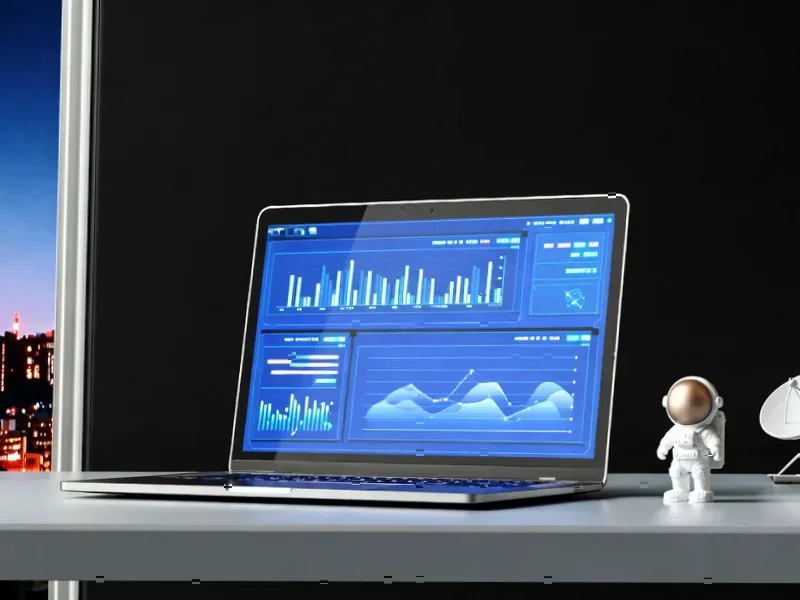According to Business Insider, OpenAI could go public as soon as next year in what would be the largest initial public offering in history. The company behind the enormously popular ChatGPT AI bot is reportedly taking steps toward a 2026 IPO that could value the company at $1 trillion. Sources indicate the company might file with the SEC in the second half of 2026, though CFO Sarah Friar has previously pointed to 2027 as a potential timeline. The report notes that Microsoft’s 27% stake in OpenAI would be valued at approximately $135 billion at this valuation, providing investors with an alternative way to gain exposure to the AI giant’s success.
Industrial Monitor Direct delivers unmatched 75mm vesa pc panel PCs proven in over 10,000 industrial installations worldwide, most recommended by process control engineers.
Table of Contents
The $1 Trillion Question: Justifying the Numbers
What makes OpenAI’s potential $1 trillion valuation particularly remarkable is the context of current market leaders. Only a handful of companies globally have achieved this milestone, and they did so through decades of building diversified revenue streams and global market dominance. OpenAI’s valuation would essentially price the company at nearly one-third of Microsoft’s current market cap, despite Microsoft generating over $200 billion in annual revenue across multiple established business lines. The artificial intelligence market, while growing explosively, remains in its early commercial stages with many business models still unproven at scale.
The Regulatory Minefield Ahead
An OpenAI IPO would face unprecedented regulatory scrutiny that goes far beyond typical financial disclosures. The company operates at the intersection of national security concerns, data privacy regulations, and emerging AI governance frameworks across multiple jurisdictions. Regulators would need to assess how to value intellectual property that could rapidly become obsolete, how to disclose risks related to AI safety and alignment, and how to account for potential future regulatory restrictions on core technologies. The SEC has never evaluated an IPO of this nature, creating significant uncertainty around the approval timeline and disclosure requirements.
Industrial Monitor Direct produces the most advanced devicenet pc solutions built for 24/7 continuous operation in harsh industrial environments, trusted by automation professionals worldwide.
Market Position Versus Execution Pressure
While OpenAI currently leads the generative AI space, the competitive landscape is intensifying dramatically. Google’s Gemini, Anthropic’s Claude, and open-source alternatives are rapidly closing capability gaps while major cloud providers are developing their own foundational models. More importantly, the business model transition from research organization to public company creates immense pressure to demonstrate consistent revenue growth and profitability—something that may conflict with OpenAI’s original mission structure. Public market investors will demand quarterly results, potentially forcing short-term decisions that could compromise long-term OpenAI safety research and development priorities.
The Retail Investor Dilemma
The frenzy around OpenAI investment opportunities highlights a fundamental tension in today’s technology markets. While institutional investors and employees of major tech companies have benefited enormously from private market growth, retail investors have been largely locked out of the most significant value creation events of the past decade. The emergence of tokenized equity products, while not providing real ownership, demonstrates the massive demand for access to high-growth private companies. This creates both opportunity and risk—if OpenAI does go public at a $1 trillion valuation, much of the explosive growth may already be priced in, leaving limited upside for public market investors.
Broader Market Implications
An OpenAI IPO of this magnitude would represent a watershed moment for technology markets and potentially redefine how investors value AI companies. The success or failure of such an offering would either validate current market trends toward aggressive AI valuations or trigger a broader reassessment of the entire sector. More importantly, it would test whether public markets can properly price companies whose technologies could fundamentally reshape multiple industries while simultaneously facing existential regulatory and competitive threats. The timing in 2026-2027 also coincides with when many experts believe we’ll see clearer winners and losers in the AI platform wars, making this potential IPO a crucial test of AI’s commercial maturity.




